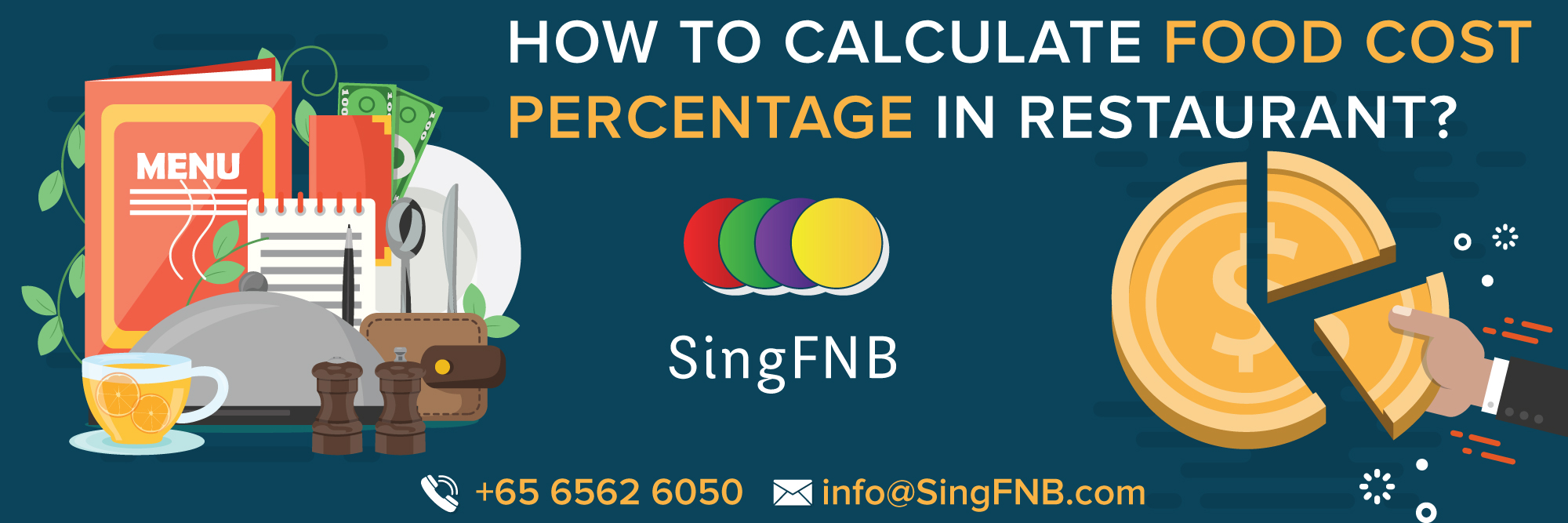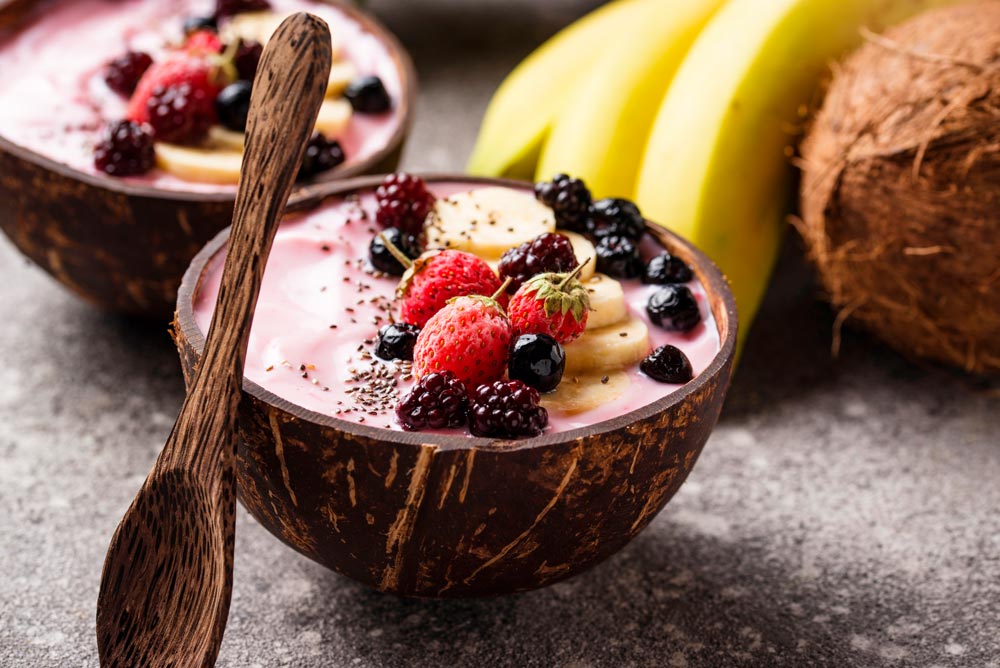
Restaurant Menu and the price of the dishes play a major role in bringing sales and profits. Along with the other unavoidable expenses like rent, utilities, maintenance, food costing can help or break your entire business budget.
How?
By knowing about your restaurant food cost, you can price your dishes accordingly, check if you need to change the supplier or cut down a dish from the menu, overall planning for the profits you can incur with some modifications.
In this article, we'll learn about the following topics:
- What is food cost percentage?
- How to calculate total food cost percentage?
- How to calculate food cost per plate/ dish?
- How to choose food cost percentage & price the menu accordingly?
- Track the effects of the price on the sales
Let's start with the basics of what a food cost percentage means in simple terms.
1. WHAT IS FOOD COST PERCENTAGE?
Food cost percentage is the proportion of your budget that you spend on buying food and beverage supplies for your restaurant.
There are ways to calculate the food cost percent:
You can calculate the food cost percentage of the total food in your restaurant or you can calculate the cost percentage of a dish.
As you know, each and every dish is unique with different supplies and quantity of particular ingredient, thus calculating the food cost percentage on a dish basis is more preferable and profitable option.
However, in some cases you would like to know the entire expenditure of the total food & beverage supplies in restaurant. In that case, you can calculate the total food cost percentage.
First, let's learn how to calculate the total food cost percentage
2. HOW TO CALCULATE THE TOTAL FOOD COST PERCENTAGE?
To calculate the food cost percentage, put the values in the below formula:
Total Food Cost Percentage = (Total Cost of Goods Sold / Total Revenue) * 100
Let's understand how to find the exact value of each field.
a. Calculate the total CoGS:
CoGS = [(Food & Beverage inventory value in beginning) + (Inventory purchase value)] - [Inventory value in end]
First, take the cost of the current inventory stock, then add in the cost of additional new inventory you purchased during that time period. Now subtract the cost of inventory that is left after overall sale form the total inventory cost in the end.
Example: Let's understand it from Mr. Wilde, a fictitious restaurateur, who wants to calculate the total food cost percentage of his restaurant for October month. According to Mr. Wilde, he has the total inventory of $12000 in the beginning of the month. Additionally, he bought some food supplies worth $ 3000. And at the end of the month, he had remaining inventory stock of $7000.
Value of Food & Beverage Inventory in October beginning = $12000
Value of additional inventory purchased in October= $3000
Value of Inventory left in the end of October month = $7000
Mr. Wilde's CoGS for month of October would be = [(Food & Beverage inventory value in beginning) + (Inventory purchase value)] - [Inventory value in end]
= [($12000) + ($3000)] - [$7000]
= $15000 - $7000
= $8000
Mr. Wilde's inventory usage for month of October was $8000, i.e., his CoGS for October was $8000.
b. Calculate the total revenue:
To calculate the total revenue of the October month, Mr. Wilde checked his POS system and found that his total earning was $26000 for the month of October.
c. Divide the total CoGS with the total revenue:
Example: Mr. Wilde's CoGs for October was $8000 and the total revenue was $26000.
$8000 / $26000 = 0.30
d. Multiply it with 100
Example: 0.30 * 100 = 30%
Thus, Mr. Wilde's total food cost percentage for the month of October is 30%.
You can use this formula to calculate the food cost percentage for a week, month, quarterly, yearly, etc.
Now, let's proceed towards calculating the food cost percentage per dish.

3. HOW TO CALCULATE FOOD COST PER PLATE/ DISH?
To learn the cost of dish that would make it profitable, read below.
Food Cost Percentage per Dish = (Total Cost of Dish per Serving / Price of Dish to Customer) x 100
Let's understand how to find the exact value of each field.
a. Calculate the total cost of dish per serving:
Find out the prices of the ingredients required to make one serving of the dish.
Example: Mr. Wilde serves a Winter Berry Smoothie Bowl as a Vegan, Gluten-Free menu item in October. The Berry bowl has been selling very well, but Mr. Wilde is confused if the ingredients are too costly to cut the profit margins. To ensure whether the bowl is suitable to be fixed on the menu, he decides to calculate the food cost percentage of the berry bowl.
First, he makes a list of the ingredients in his berry bowl: berries, soy milk, banana, chia seeds, hemb seeds, and cocoa nibs.
He then finds out the quantity of the ingredients required to make one serving of the bowl.
The list goes as:
1 cup frozen berries (raspberries, blackberries, blueberries, strawberries) = 140 gms
1/3 cup plain, unflavored soy milk
1/2 banana, ripe
1 tablespoon chia seeds
¼ cup frozen berries
1 tablespoon hemp seeds
1 tablespoon cocoa nibs (unsweetened, crushed cocoa beans)
Mr. Wilde then calculates how much each of these quantities costs and finds the Total Dish Cost for his berry bowl:
140 gms frozen berries = $4
1/3 cup plain, unflavored soy milk = $2
1/2 banana, ripe = $0.08
1 tablespoon chia seeds = $0.14
¼ cup frozen berries = $1.2
1 tablespoon hemp seeds = $0.15
1 tablespoon cocoa nibs (unsweetened, crushed cocoa beans) = $1.00
Total cost for Winter Berry Smoothie Bowl per serving: $8.57
b. Find out Price of Dish to Customer
This step is simple. Look at your menu and check how much do you charge for the dish?
Example: Mr. Wilde charges $15.00 for his berry bowl. Therefore, Mr. Wilde's Price of Dish to Customer is $15.00.
c. Divide the total cost of dish per serving with the price of dish to customer
Mr. Wilde's berry bowl costs $8.57 to prepare and he sells it for $15
$8.57 / $15 = 0.57
d. Multiply it with 100
Example: 0.57 * 100 = 57%
Thus, Mr. Wilde's berry bowl has a 57% food cost percentage per dish.
To know about what Mr. Wilde should do with his dish, let's understand how to choose the food cost percentage
4. HOW TO CHOOSE THE FOOD COST PERCENTAGE & PRICE YOUR MENU?
To decide which food should be kept on menu, industry has set a certain benchmark for food cost percentage:
| FOOD AND BEVERAGE CATEGORY |
INDUSTRY BENCHMARK FOOD COST PERCENTAGE RANGE (%) |
| Overall |
20 – 40% |
| Non-alcoholic beverage |
10 – 30% |
| Food |
25 – 40% |
| Wine |
30 – 50% |
| Draft beer |
20 – 40% |
| Bottled/canned beer |
30 – 35% |
| Liquor |
10 – 20% |
| Mixed drinks at bar |
5 – 25% |
By comparing your food cost percentage with the industry benchmark, you can choose your profitability.
For example: Mr. Wilde's berry bowl has a 57% food cost percentage. On comparing it with the industry benchmark, it is concluded that berry bowl has high cost percentage and that makes it too costly and thus isn't profitable to be kept on the menu.
Similarly, by comparing your food cost percentage per dish with the industry benchmark, you can check the profitability of a dish.
Moreover, instead of just cutting the dish from the menu, you can either increase the price of the dish on menu or look for the supplier who provides the ingredients at low cost.
This is how you choose the dish and price it based on the profitability.
After pricing the dish, comes the sale of the dish.
5. TRACK THE EFFECTS OF THE PRICE ON THE SALES
Just changing the price of the dish won't yield the results. To have a successful restaurant, you have to track the effects of pricing on your sales to determine whether or not you need to adjust prices.
Let’s revisit Mr. Wilde's restaurant one last time. After using our pricing formula, Mr. Wilde determined that he needs to raise the price of the berry bowl from his original price of $15 to $25. How did the new price affect sales?
Here are two scenarios that illustrate what could have happened:
a. Decrease in the berry bowl demand
If the sale of the bowl slows after increase in price, that means, customers find the price too high.
In such case, Mr. Wilde can either look out for the different suppliers or can reduce the price of the dish to $21 according to the industry benchmark of 40%. People may be find it affordable than the $25.
b. Berry bowl on demand!
Bowls on demand means even the increased price is affordable for the customers.
In this case, Mr. Wilde can keep the price of the bowl to be $25 satisfying the industry benchmark of 38%.
Thus, looking at the sales is important after the menu revamping.
WRAPPING UP...
This is too much of the calculation!
To check and decide the price of each and every dish on the menu by this old school method of manual calculation is just impossible.
Well, we have a better solution, i.e. the POS system.
Bring in a POS system that would calculate your food cost percentage, the inventory value, the revenue, the cost of the dish, etc automatically without any miscalculation.
Looking for one?
SingFNB ePOS provides you with all the features of a modern POS system at an affordable price.